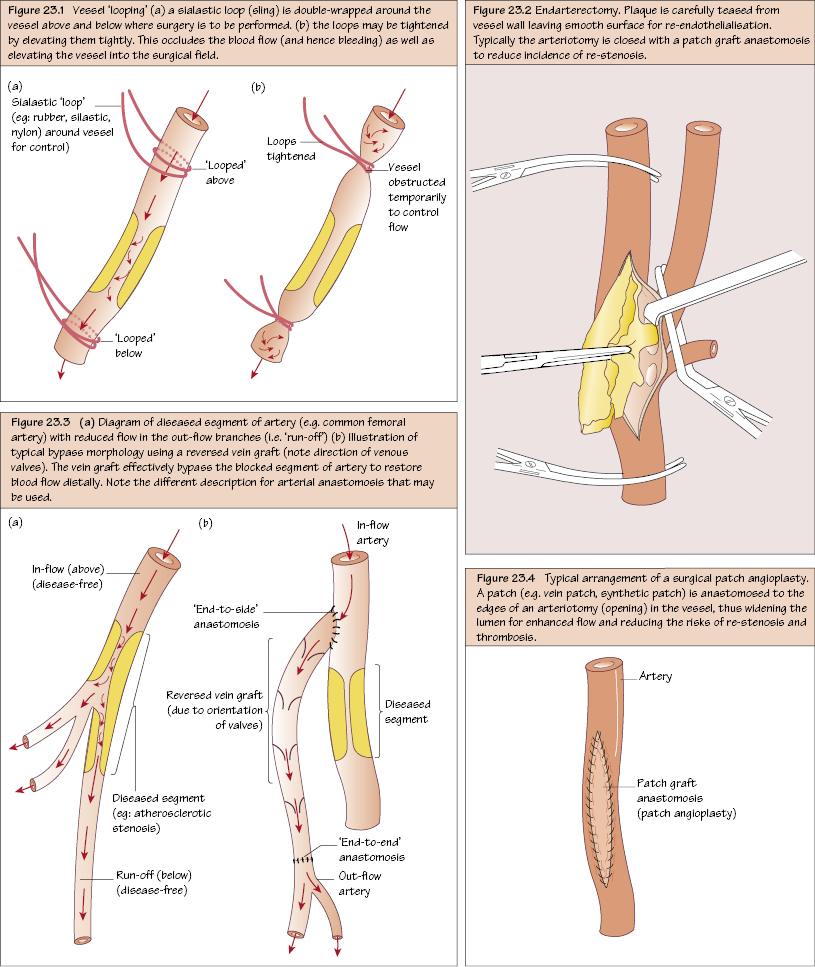Principles of Vascular Surgery
Successful Graft Function and Longevity
- Good in-flow (above the disease).
- Good back-flow (i.e. run-off below the disease).
- Intermittently flush debris from vessels with heparinised saline.
- Systemic anticoagulation prior to clamping.
- Use of BMT (±anticoagulation).
Vessel Dissection
- Proximal dissection and control first.
- Then distal dissection and control.
- Followed by dissection and control of the diseased segment.
Handling the Vessel
- Minimally handling to reduce the risk of injury and thrombosis.
- Once vessel is opened, the intima should not be picked up with any instrument to prevent injury and thrombosis.
- For manipulation of the vessel, the adventitial layer can be gently picked up with forceps and manoeuvred.
Controlling the Vessel
- A vascular ‘loop’ should be slung around the vessel (preferably looped twice) both above and below the diseased segment (i.e. ‘looping’ or ‘Pottsing’ the vessel).
- This allows both easy vessel manipulation and control of bleeding by lifting the vascular loops upwards, which in turn will ‘snug-down’ on the vessel.
- Large branches may be controlled in the same way, while smaller branches may also be looped but with a surgical tie (without actually tying a knot so as to preserve collateral supply).
- Appropriate-sized and angled vascular clamps may then be applied. Although these are atraumatic, clamp damage may still occur from fracturing the wall (especially calcified vessels) and intimal tearing.

![]()



